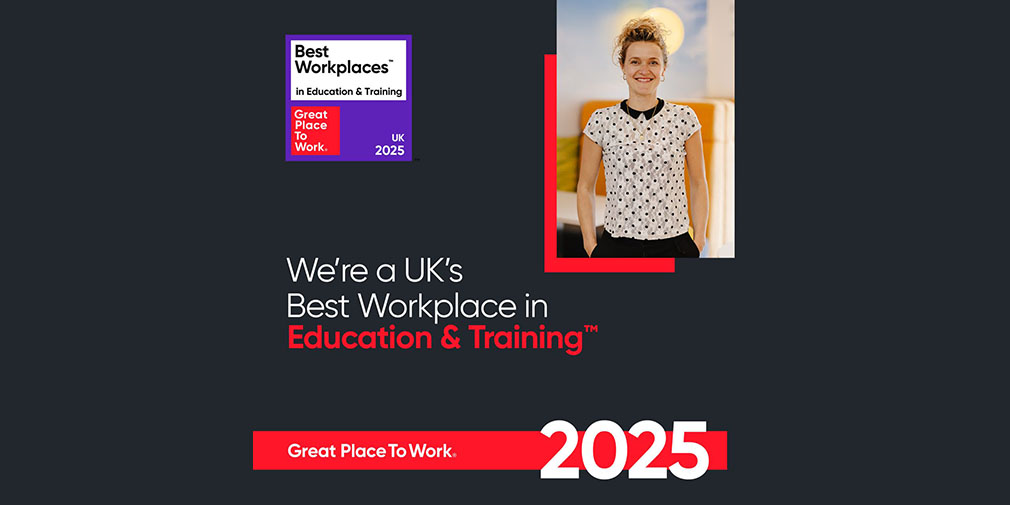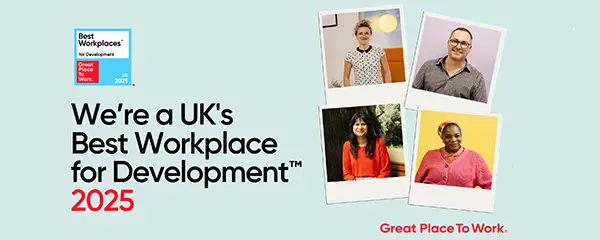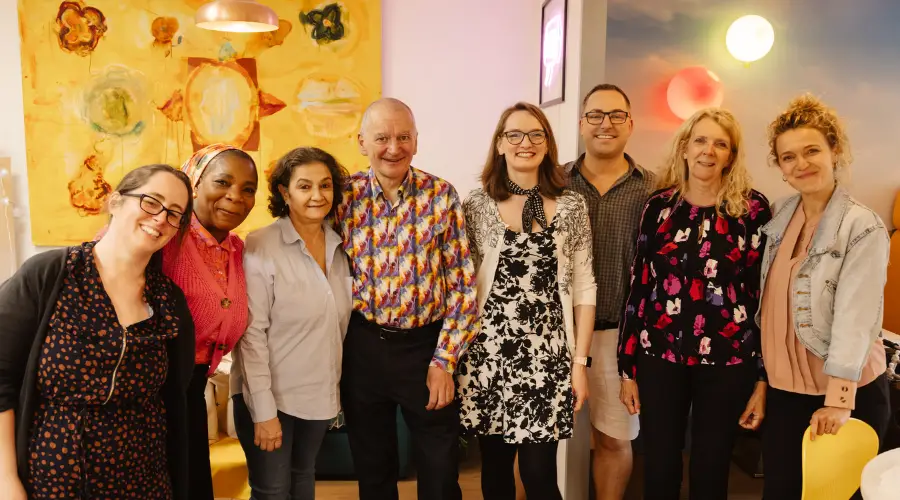Everyone knows happy employees are essential for business. They have better performance, stay with the company longer, and are much more innovative. Despite this, we tend to ignore who really makes happy employees possible.
When we think about maintaining employee well-being at work through perks such as mindfulness training or meditation rooms, we tend to focus on the individual. It becomes the employee’s job to regulate their happiness, utilizing what is given. But something is missing in these conversations.
A 2022 paper by Anna-Maria Mutrola and Neil Vallelly, published in Organization, suggests we have been looking at well-being through a narrow lens. They question: Who cares for wellbeing? Not in the “who loves it most” sense, but literally, who performs the work that enables workplace wellbeing?
Their answer may surprise you, and it may change the way we think about creating happy workplaces altogether.
Wellness isn’t a solo project
Let’s start from the beginning. Over the past decade, “corporate wellness” has become a trending topic in the industry. Companies are investing more than ever in the wellness of their employees. And that’s a great thing, we want initiatives that make people feel valued and supported at work. But what happens when the responsibility for well-being starts to feel a little bit like just another performance metric?
Murtola and Vallelly point out that most wellness programs today are deeply individualised. You, the employee, are in charge of your own stress levels. It becomes your job to stay resilient, be mindful, eat right, and show up every day and perform to the best of your abilities.
At first, it can seem somewhat empowering or comforting that the company supports your own wellness journey. However, after some time, it can feel a bit alienating. There are struggles employees have to face that are outside of their control. This can include work deadlines, poor management, or family care responsibilities. If you are not feeling well at work, the blame tends to shift to you.
The hidden costs of individual responsibility
Wellness initiatives are mostly built on good intentions. But when they treat well-being as a private problem, that can actually increase pressure. If you feel overwhelmed? You need more mindfulness. Feeling exhausted? You should try breathing exercises.
These responses focus on the symptoms, not the causes. They look over deeper systemic issues, such as understaffing, gendered expectations around care work, or the rising cost of living. Corporate wellness can be used as a way to shift responsibility from the employer to the individual.
But what if the real problem isn’t just that we individualise well-being? What if we are ignoring the bigger picture?
The social side of well-being
Employee well-being doesn’t begin at the office. It happens long before and far beyond the workplace. Murtola and Vallelly use social reproduction theory to explain this. The idea is simple: people need support systems in order to live and work well. That implies food on the table, care for their kids and parents, clean homes, transport to work, healthcare, emotional support, and so on.
And guess what? Someone is doing all that work.
Someone cleaned the office before you arrived. Someone is looking after your children so you could attend that early meeting. Someone cooked the meal you ate for lunch, and cleaned the cafeteria after you. These essential workers form the foundation for workplace well-being. Despite that, they are rarely discussed in conversations about wellness.
Are Essential Workers Expendable?
The COVID-19 pandemic helped make this invisible work visible. The people whose jobs are often overlooked, but whose contributions are quite literally life-sustaining, became the hot topic. When everything went into lockdown, office workers were able to continue working at home through Zoom. Essential workers, on the other hand, had to continue showing up in person, often without proper protection, pay, or recognition.
The authors extend that any recognition they did have was purely symbolic. These workers are still underpaid and undervalued.
So here’s the uncomfortable truth: the well-being of one group (corporate employees) often depends on the labour and sacrifice of another (essential workers).
A broader definition of “happy workplaces”
Happy workplaces change the world, but we also have to be honest. A part of that means recognising that happy workplaces don’t exist in a vacuum. They are built on networks of support, care, and fairness. That’s why the question “Who cares for wellbeing?” matters so much. It asks us to think beyond perks and personal responsibility. Systems of race, gender, class, and migration all shape who gets to be well and who gets left out. Happiness focuses on being supported in every aspect of your life, not just at the desk.
So what can organisations do?
If we accept Murtola and Vallelly’s argument that well-being is socially produced, what does that mean for companies aiming to create genuinely happy workplaces?
The article urges organisations to move beyond narrow, individualised wellness models and acknowledge the broader ecosystems of labour and care that support employee well-being. Here are five actions companies can take, inference from the paper’s insights:
1. Recognise Invisible labour
Start acknowledging the people behind the scenes. Cleaners, security staff, food service workers, and delivery drivers all contribute to the foundation of the workplace’s well-being.
2. Pay attention to structural inequality
Assess whether systemic inequalities are playing out in your own environment. Are some groups taking on more unpaid emotional labour or logistical care work? Are support roles under-resourced or staffed disproportionately by marginalized workers?
3. Go beyond the office
Support your employees outside of work. Offering flexible scheduling for caregivers or providing child and elder care support are all actions that can improve well-being. A happy employee is someone who feels supported both in and out of work.
4. Move from symbolic to material change
Invest in people’s material needs, such as better wages, safer working conditions, or mental health services. Those in these support roles should receive proper funding and respect.
5. Include essential workers in the conversation
Bring essential workers into your well-being planning. Understand what they need and act on their feedback. As the backbone of the company’s functionality, they deserve to take part in any well-being strategy adopted.
Final thought
Murtola and Vallelly don’t reject wellness; they support it. But they want us to redefine it and stop people from thinking wellness is a personal achievement and start seeing it as a shared practice. A truly happy workplace uplifts its employees and the communities that sustain them. So, the next time you’re asked how your organisation supports well-being, start by asking: Who makes well-being possible here? Are we caring for them too?
Reference:
Murtola, A.-M., & Vallelly, N. (2023). Who cares for wellbeing? Corporate wellness, social reproduction and the essential worker. Organization (London, England), 30(3), 510–527. https://doi.org/10.1177/13505084221131642





















